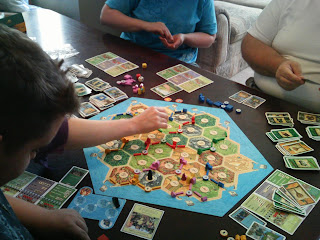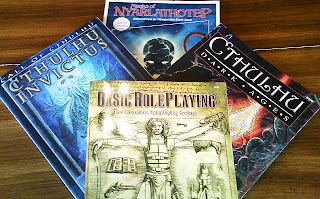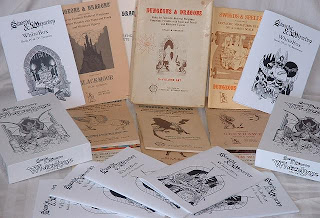Michael Curtis was recently waxing nostalgic about an old Avalon Hill game, Kingmaker. This got me thinking about my favorite Avalon Hill games, from my youth. Of course, it is self-evident that any top ten list of Avalon Hill games, that does not include Magic Realm, is flawed.
I give you my top ten Avalon Hill games, which you can take to the bank as the most authoritative list of the greatest Avalon Hill games ever created, as it includes my favorite game, Magic Realm.

10. Circvs Maximvs: What could be more fun that competing with your friends in a no-holds-barred, kill-or-be-killed chariot race? The game features a stadium that is the same shape as the actual Circus Maximus.

9. Richthofen's War: I was never a big fan of other dog-fight and aerial combat games, but Richthofen's War scratched my role-playing itch for World War I combat, as you could play the Red Baron or some other fly-boy, and earn your kills and medals.

8. Wooden Ships, Iron Men: Something about those little ship units, and having to take wind direction and speed into account when planning your attack. I no longer own this game, but would love to play it again. It might be fun to use these rules for a Pirates of the Caribbean game.

7. 1830: I'm sure the newer train-games are better than this, but this is my nostalgia list, so 1830 it is. I loved Sid Meier's Railroad Tycoon game as well, and these two games just seen to go hand in hand. I enjoy playing Ticket to Ride, but there is something about being a Robber Baron in 1830 that puts Ticket to Ride to shame.

6. Acquire: Stock Ticker was a lot of fun, too (back in the day), but Acquire sneaks past it as my favorite capitalist game of yore. I havn't played this game in decades, but it was sufficiently popular that Hasbro reprinted this when they bought up the Avalon Hill properties.

5. History of the World: Sure, this isn't one of the grand-daddys of the history of Avalon Hill, but its a lot of fun to play with non-wargamers.

4. Kingmaker: I never owned the expansion cards, but the regular game was still a lot of fun. I loved the board of England: it uses what might be the actual county or district borders rather than a hex or regular grid.

3. Advanced Civilization: Oh boy. So many great memories here, sitting around the mediterranean game board. My two favorite civilizations are the Egyptians and the Babylonians: part of the fun of playing them is watch
ing the floods wipe out half of your civilization! I can't recall a game that lasted less than six hours, most of them were closer to ten hours. The front runner is always ganged up on by the rest of the players, but pulls out a win anyways.

2. Squad Leader: While this World War II squad-level combat game is a lot of fun, when playing the various historical scenarios, most of our games were of the build-your-own-forces variety. Selecting just the right officer, who you imagined to be you, made the game that much more intense. Advanced Squad Leader both fixed, and killed this game for me.

1. Magic Realm: How could this not be my all-time favorite Avalon Hill game? The game breaks down after month two, as you have, by then, become so powerful that every monster is beatable, but most games only run for one or two months anyway. The highly deterministic Magic Realm combat system is a refreshing change from the D&D d20 combat system, and the open-endedness for both cooperative and competitive play makes for shifting alliances and exciting end-game planning.
 There are quite a few old-school Dungeons and Dragons players and DM's who have a soft spot for module T1, The Village Of Hommlet.
There are quite a few old-school Dungeons and Dragons players and DM's who have a soft spot for module T1, The Village Of Hommlet.



















 Yesterday
Yesterday






